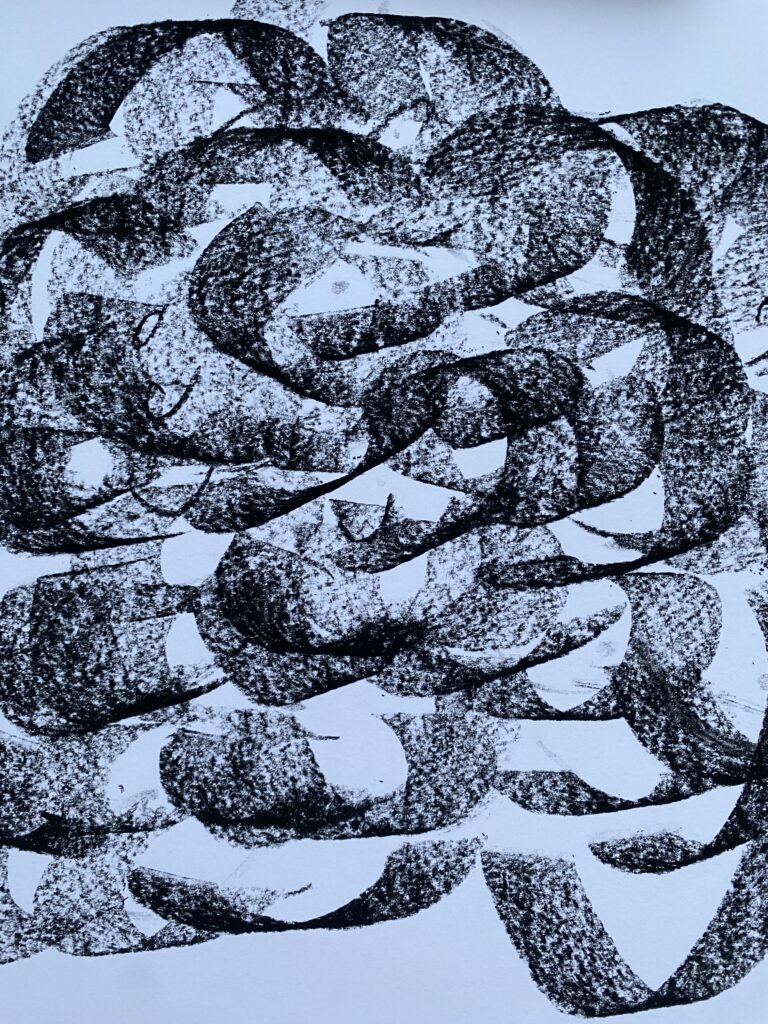Image or Performance?
Art therapy helps us to understand and depict psychological processes. It is often used when you do not know more and cannot express your problems in words.
In our work on this topic, we started a self-experiment:
What does crying look like for us?
What do we feel when we cry and how can we express our feelings?
During my self-experiment, two snapshots of my drawing were taken. While I described the former as more excited and dynamic, and the latter as calmer, I noticed in the following discourse that the Institute determined it differently.
What brings us to these different descriptions?
The institute could only look and analyse the two static images and drew its conclusions from the observation of these.
However, I could still feel the movements that led to the two pictures.


The first picture was created by wild and fast movements and the second by calm and relaxing strokes over the previous painting.
So I remembered the performative gestures during the painting and therefore drew different conclusions from my works.
In art therapy, is the process also important to the result of the expression of feelings?
Are performative processes during painting equally important and relevant for art therapy?
For a sufficient and in-depth analysis of the psychic processes, both are probably balanced. One could even say that the behavior before painting should also be included in the analysis.
This allows you to better understand the person’s feelings.
Expressing and portraying my own feelings was a new and interesting experience for me. I had to deal with my feelings, which I usually tend to suppress in part.
While words could not have described what I was feeling at that moment, the pictures could.